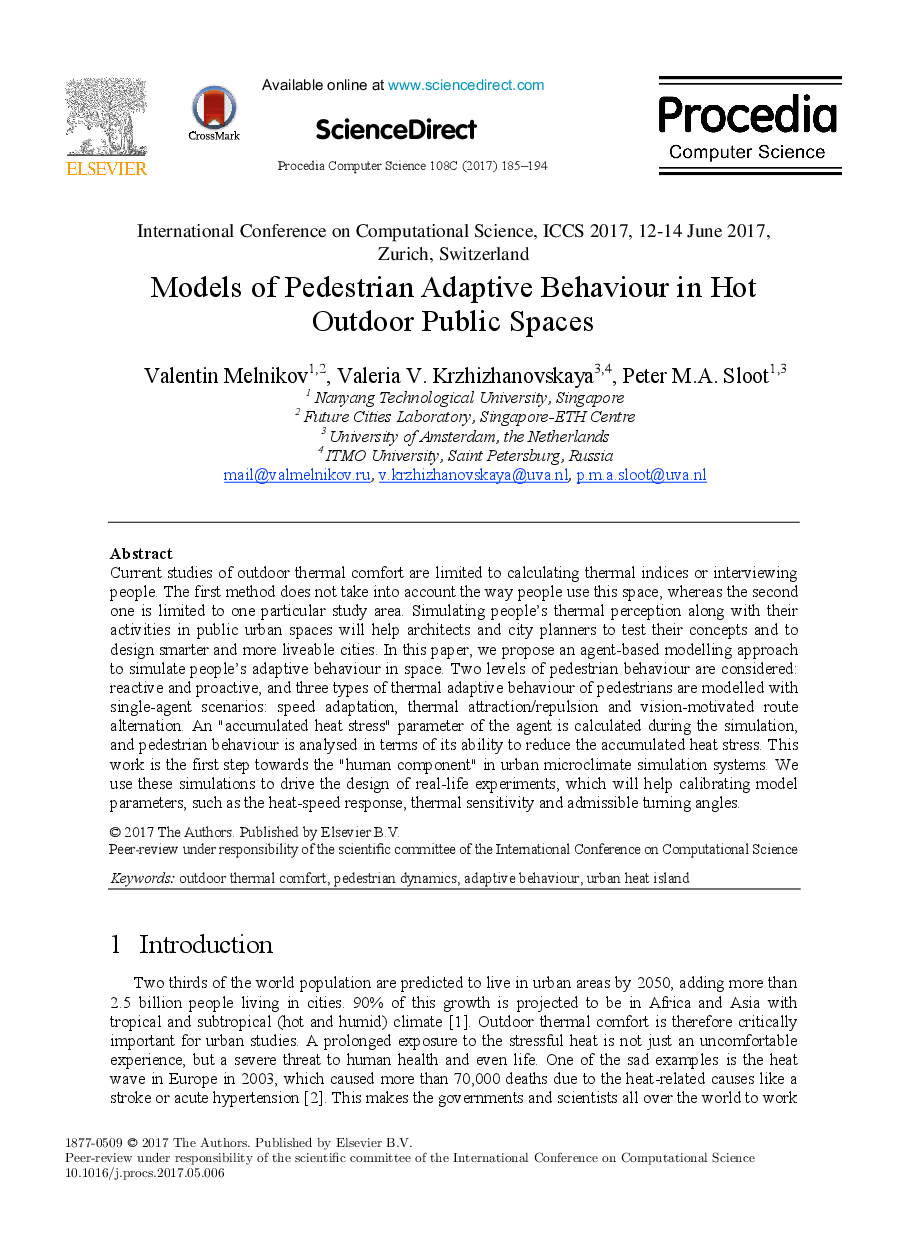ترجمه فارسی عنوان مقاله
مدل رفتار سازگاری عابر پیاده در فضاهای عمومی در فضای باز
عنوان انگلیسی
Models of Pedestrian Adaptive Behaviour in Hot Outdoor Public Spaces
| کد مقاله | سال انتشار | تعداد صفحات مقاله انگلیسی |
|---|---|---|
| 143816 | 2017 | 10 صفحه PDF |
منبع

Publisher : Elsevier - Science Direct (الزویر - ساینس دایرکت)
Journal : Procedia Computer Science, Volume 108, 2017, Pages 185-194
ترجمه کلمات کلیدی
راحتی حرارتی در فضای باز، پویایی عابر پیاده، رفتار تطبیقی، جزیره گرمایشی شهری،
کلمات کلیدی انگلیسی
outdoor thermal comfort; pedestrian dynamics; adaptive behaviour; urban heat island;
ترجمه چکیده
مطالعات کنونی راحتی حرارتی در فضای محدود برای محاسبه شاخص های حرارتی یا مصاحبه با افراد محدود است. روش اول به این نکته توجه نمی کند که مردم از این فضا استفاده می کنند، در حالی که دوم، محدود به یک منطقه مطالعه خاص است. شبیهسازی حرکات مردم به همراه فعالیتهای آنها در فضاهای عمومی شهری، به معماران و برنامه ریزان شهر کمک خواهد کرد تا مفاهیم و طراحی شهرهای هوشمند و قابل فهم را طراحی کنند. در این مقاله، ما یک رویکرد مدل سازی مبتنی بر عامل را برای شبیه سازی رفتار انطباقی مردم در یک فضا پیشنهاد می دهیم. دو مرحله رفتار عابر پیاده در نظر گرفته شده است: واکنش پذیر و پیشگیرانه و سه نوع رفتار حرارتی تداخل عابر پیاده با سناریوهای تک تک عامل: انطباق سرعت، جذب حرارتی / افتادگی و جابجایی مسیر مبتنی بر بینایی. پارامتر "گرما گرما انباشته شده" عامل در طول شبیه سازی محاسبه می شود و رفتار پیاده روی از نظر توانایی آن در کاهش استرس گرمای انباشته تحلیل می شود. این کار اولین گام به سمت "مولفه های انسانی" در سیستم های شبیه سازی میکرومتر شهر است. ما از این شبیه سازی ها برای هدایت طراحی آزمایش های زندگی واقعی استفاده می کنیم که به کالیبراسیون پارامترهای مدل، مانند پاسخ سرعت گرما، حساسیت حرارتی و زاویه های مجاز پذیری کمک می کند.

